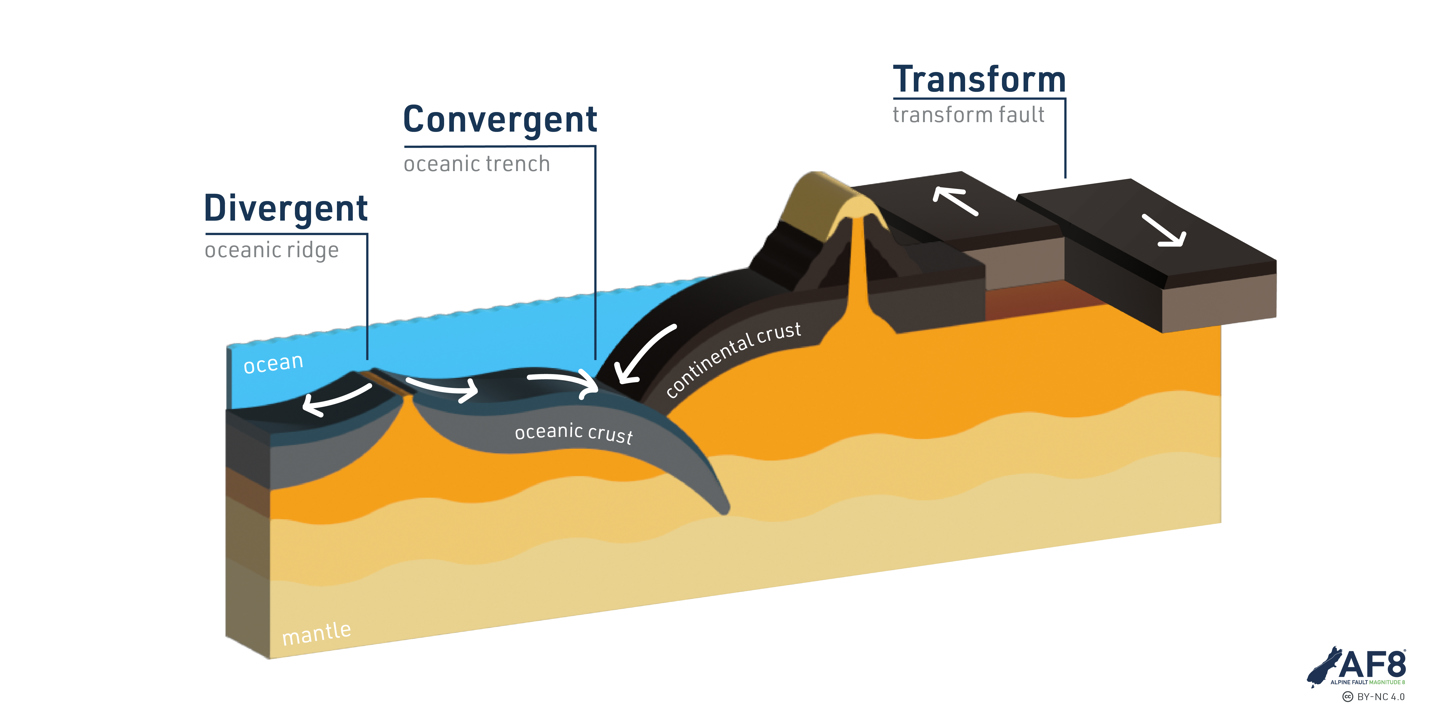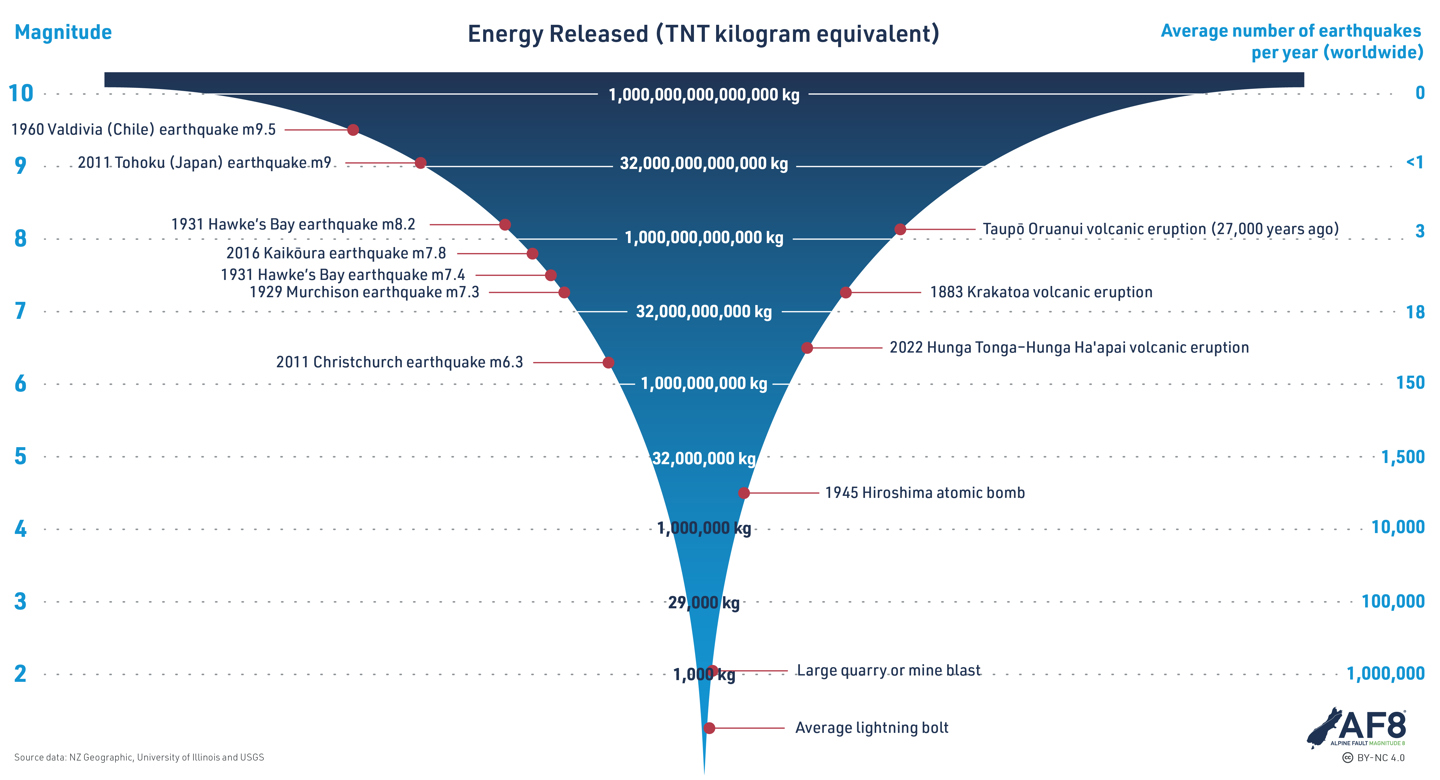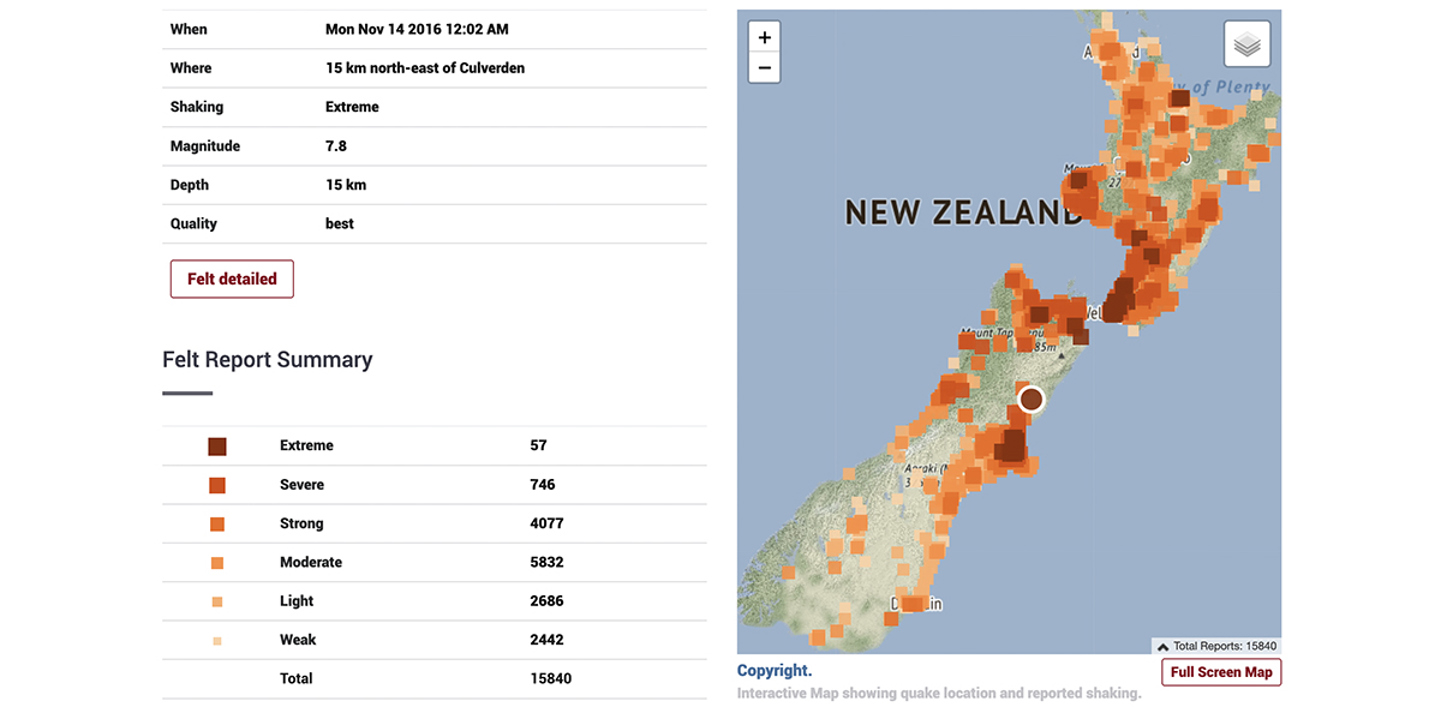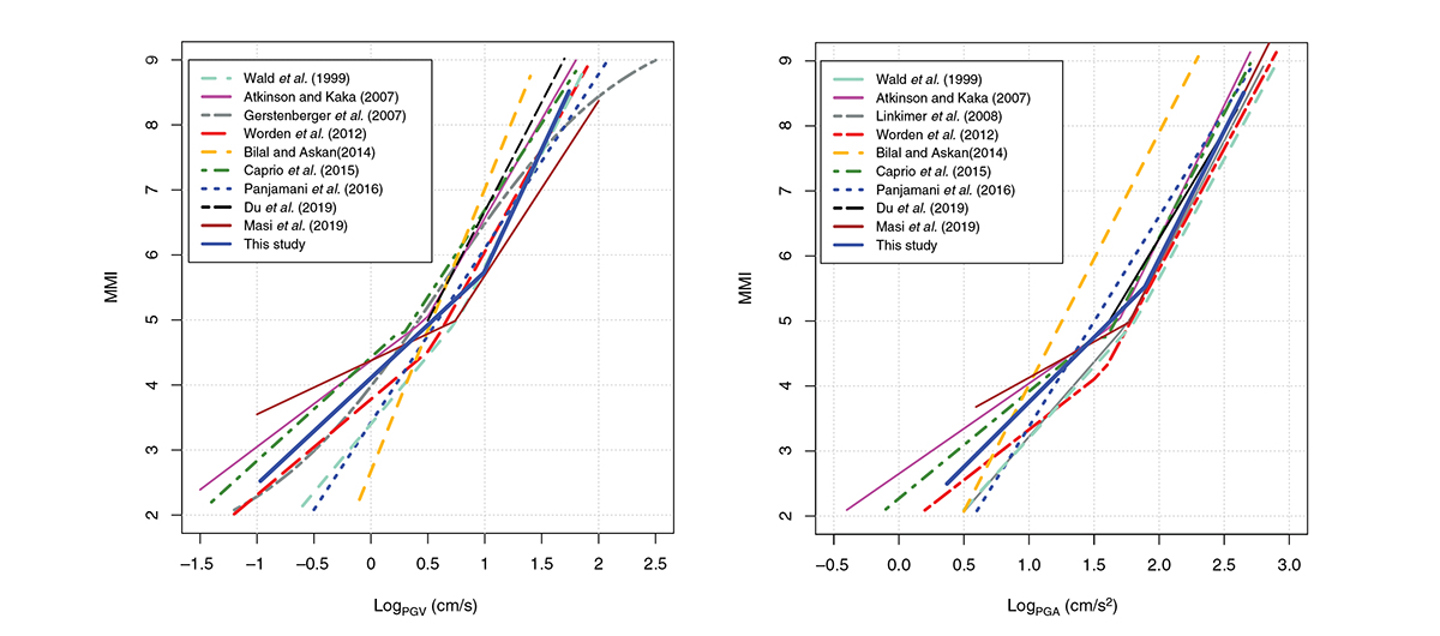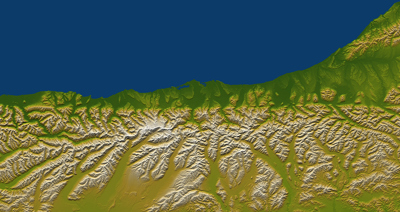Comparing human experience and scientific intensity measurements
Human experience measurements (like the Felt reports) give a real-time indication of how an earthquake feels to those on the ground. However, in a strong earthquake, people are not going to spend time filling in a form on their phone (if phones are even working).
This is evident when you look at the GeoNet ‘Felt report’ (right) for the 2016 Kaikoura Earthquake. You can see a lack of reports from around the epicentre, (where there was the highest intensity shaking happening) as people focused on more important things.
This means that immediately after a big quake, scientists are reliant on the scientific measurements coming in from ground motion sensors to try and work out what is happening to people and structures on the ground.
